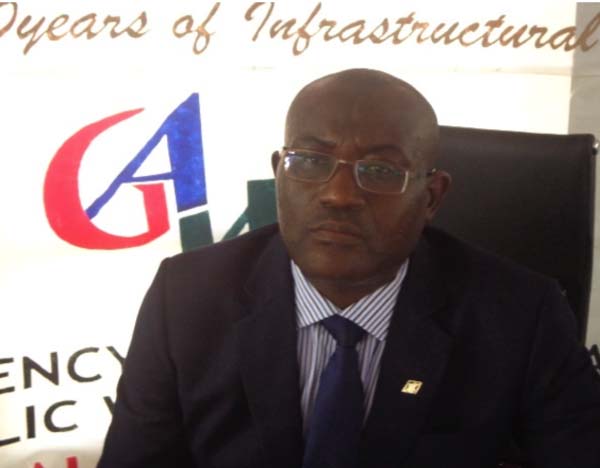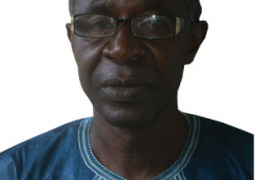
He said the community-based infrastructure and livelihood improvement project, CILIP, was financed by the Gambia government with a loan of US$15.86 million and a technical assistance grant of US$400,000 from the Islamic Development Bank (IDB).
Additional financing is provided by way of counterpart contributions by the Gambia government of US$880,000, local councils and sub-project beneficiaries US$880,000 to give a total project cost of US$18.02 million, he said.
The GAMWWORKS DG, who was speaking recently at the 10th annual general meeting of GAMWORKS, said the aim of the CILIP project is to support the government’s strategy to alleviate poverty in the rural and peri-urban areas.
The project, he added, would empower beneficiaries’ communities and improve their livelihood and welfare, through financing demand-driven community infrastructure and livelihood activities.
The project, he went on, has the following components: Community infrastructure facility which has two sub-components - the community-owned infrastructure sub-component and the cross-community infrastructure sub-component; livelihood improvement; institutional development; project implementation support and consultancy service.
According to Mr Cham, the project is under the Ministry of Lands and Regional Government, adding that GAMWORKS is the project management unit (PMU) and, as such, the agency is charge with the implementation and day-to-day administration of the project.
Regarding the current status, Mr Cham said due to the community- demand driven CDD modus operandi of the project, the early years of the project was spent setting up the necessary institutional arrangements and structures on the ground, including construction of three zonal offices, and the recruitment and posting of field staff.
This was followed by the participatory consultations and discussions, with stakeholders and beneficiaries, he said.
He said these consultations led to the selection of the target 200 communities for the community-owned infrastructure COI sub-component, followed by the development of community development plans and identification of priority sub-projects through participatory processes.
According to the GAMWORKS DG, the stage has now been set for the implementation of the CILIP project on the ground, while the implementation of all components of the project is actively ongoing.
He said about the community-owned infrastructure COI sub-component, the agency has effected disbursements to the bank accounts of the selected communities to finance the self-implementation of their sub-projects.
The majority of the COI sub-projects are water supply related, but there are also other types of sub-projects such as market infrastructure, skills centers, seed stores and electricity network extension, he stated.
The technical department of GAMWORKS, as technical assistance to the communities, prepared the bidding documents for the COI sub-projects, he noted.
However, he continued, the communities are responsible for the procurement of the contractors and the subsequent contract management.
He said CILIP project field staff would monitor implementation of COI sub-projects and are available to provide technical assistance if required.
He said with regards to the sub-projects of the cross-community infrastructure sub-component, which are the bigger investments handled at the level of the councils and municipalities, contracts were tendered nationally, contracts awarded and works are ongoing at the various sites throughout the country.
“There are a variety of cross-community infrastructure sub-projects, including several markets, roads, car parks, water supply, a multi-purpose center, a hostel, a health post and a hospital building,” DG Cham said.
On the livelihood improvement component, he said, a call for proposals was launched nationally for the matching grants sub-component.
The response was overwhelming as 900 submissions were received which were reviewed and analyzed, and 400 of the eligible submissions chosen by the technical review and approval committees at the level of the regions would be funded.
He said some monies have also been “ring fenced” for the vulnerable member groups such as the Gambia Federation of the Disabled (GFD) and the umbrella body of HIV-Aids support groups, GAMMAS.
Under the livelihood, Improvement “seed money” was also provided for a Sharia compliant Islamic micro-finance fund, he stated.
Since Islamic microfinance is relatively new in The Gambia, a consultant was hired to give training to project staff and stakeholders in government and the microfinance institutions, he said.
The instruments for the disbursement of the Islamic microfinance fund are currently being developed, he stated.
To tracks progress of the various sub projects and projects activities, and for easy retrieval of information, a management information system (MIS) has been developed for the project, and is being used by project staff, Cham went on.
The Ministry of Finance has made payments toward the government counterpart funding for the project, but 40 percent of the required amount is still outstanding, he further stated.
On the other hand, the local councils and municipalities have fully paid the counterpart contributions for their cross-community infrastructure sub projects.
The CILIP project, he continued, would have a significant impact in the empowerment of local communities, infrastructural development of rural and peri-urban areas and reduction of poverty.


